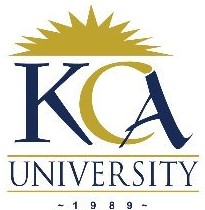 UNIVERSITY EXAMINATIONS: 2010/2011
UNIVERSITY EXAMINATIONS: 2010/2011
THIRD YEAR EXAMINATION FOR THE DEGREE OF BACHELOR OF
SCIENCE IN INFORMATION TECHNOLOGY
BIT 3102: INFORMATION SYSYTEMS SECURITY &
CRYPTOGRAPHY
DATE: AUGUST 2011 TIME: 2 HOURS
INSTRUCTIONS: Answer question ONE and any other TWO questions
Question One (30 Marks)
a) Discuss how the following tools and techniques are used to attack a system:
i) Sniffers (2 Marks)
ii)Scanners (2 Marks)
iii) Robot Auto Processes (2 Marks)
b) Describe the two approaches that are used to defend against replay attacks. (4 Marks)
c) Describe how the concept of the Key Distribution Centre (KDC) operates. (5 Marks)
d) Discuss the following:
i) Mandatory Access Control (MAC) (2 Marks)
ii) Discretionary Access Control (DAC) (2 Marks)
e) Outline briefly any five important factors to consider when choosing a firewall solution. (5 Marks)
f) Outline four purposes of a proxy. (4 Marks)
g) Why is access to a hard drive considered a serious security breach? (2 Marks)
Question Two
a) Compare and contrast RSA and Diffie-Hellman algorithms (7 Marks)
b) Relations between encryption and signature methods became possible with the “digitalization” of
both and the introduction of the computational-complexity approach to security.
i) State the THREE requirements that a scheme for unforgeable signatures must possess.
(3 Marks)
ii) State the THREE requirements for a scheme that would perform message authentication
(3 Marks)
c) State the four characteristics of a good cryptographic algorithm. (4 Marks)
d) Cryptography is the study of the mathematical algorithms and functions used to secure messages.
These algorithms fall into two camps: restricted and open. Explain which of the above the
algorithm is preferable and why you could choose it. (3 Marks)
Question Three
a) Outline any four common motivations for companies to seek outside security help. (4 Marks)
b) Explain why computer networks will continue to experience security problems. (5 Marks)
c) Biometric measurements or personal attributes are used for authentication. These attributes are
unique to the individual seeking to authenticate identification.
i) List any four types of biometrics that are used for authentication (2 Marks)
ii)Discuss the two types of errors that occur when biometrics are used for authentication.
(4 Marks)
d) Describe briefly any five IDS categories. (5 Marks)
Question Four
a) Define the following concepts
i) Penetration testing (1 Mark)
ii) Recovery Point Objective (RPO) (1 Mark)
iii)Recovery Time Objective (RTO) (1 Mark)
iv)Business Continuity Plan (BCP) (1 Mark)
v) Business Impact Analysis (BIA) (1 Mark)
b) Discuss the concept of Trusted Computing Base (TCB) and how it is implemented. (4 Marks)
c) A Disaster Recovery Plan (DRP) is a policy that defines how people and resources will be protected
in the case of a natural or man-made disaster, and how the organization will recover from the
disaster. Discuss the three residual risks that must be considered. (6 Marks)
d) State any five steps you would take in order to avoid a trojan infection (5 Marks)
Question Five
a) Explain the following security models:
(i) Information Flow Security Model (3 Marks)
(ii) Biba Security Model (3 Marks)
b) (i) Discuss briefly what constitutes a computer crime. (2 Marks)
(ii) Describe briefly any five types of evidence. (5 Marks)
c) Explain how a firewall could have a negative impact on network performance (3 Marks)
d) Explain briefly any four practices that should be enhanced in order to combat computer fraud
within an organization. (4 Marks)
